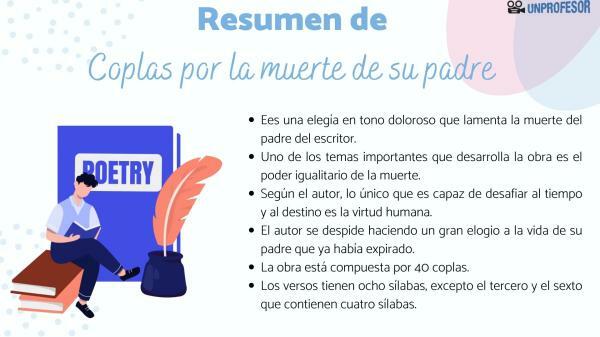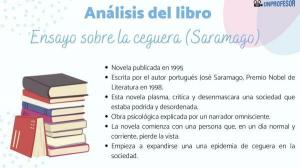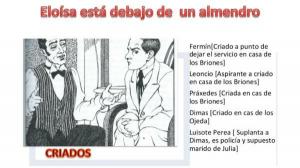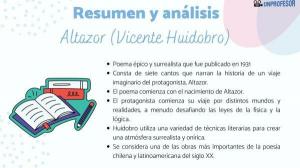Couplets for the death of his father: SUMMARY and analysis

Couplets for the death of his fatheris a poetic work written by Jorge Manrique at the time of his father's death. They are also known as Coplas to the death of Master Don Rodrigo Or simply, The couplets by Jorge Manrique. This book written in 1476 has become one of the capital works of Spanish literature.
In this lesson from a TEACHER we want to make you a summary and analysis of the Couplets for the death of his father, this work that reflects on life, fame, fortune and death, with Christian resignation.
Couplets for the death of his father is a elegy in a painful tone who mourns the death of the writer's father. During the development of the poetic stories you will be able to see how the writer expresses in a melancholic way the instability of the goods that fortune offers you and the fleeting nature with which death takes human lives, without them wait.
One of the important themes that the work develops is equal power of death, with which both rich and poor are heading towards the same fate and can do nothing to avoid it. According to the author, the only thing that is capable of defying time and destiny is
human virtue, with which people decide to spend their days on earth in the most complete way possible.In the book you can also find some philosophical reflection that brings some hope to the future life, beyond the gates of death. Finally, the author says goodbye with great praise for the life of his father who had already expired, the Grand Master of Santiago Rodrigo Manrique.
Part 1, from stanzas I to XIII
The first section of the book begins with some general reflections about life, in which the author expresses the transience of life and pleasure, since this immediately turns into pain or sorrow. He ends this section with a lamentation in which he is clear that any past time was always better and that time flies, so we must take advantage of it.
Then he goes to reflect on death and he talks about how life is like the rivers that flow into the sea, in this case, death. Every day that passes we are closer to death, no matter who we are. Finally, the poet offers his life to God, being clear that worldly pleasures are temporary, but that heavenly pleasures last for eternity.
Part 2, from stanzas XIV to XXIV
In this second section, Manrique begins by remembering the lives of some famous characters of his time, to emphasize that they also died. He talks about characters like kings, nobles, and important people in history. These individuals had it all, but it was of no use to them when death came their way.
This is the only moment in the work in which the author leaves pessimism aside to talk about the sensuality of women and love. But, quickly, he returns to the deaths of those who were once known.
Part 3, from stanza XXV to XL
The last relevant character who decides remember is your father and he does so by dedicating a beautiful elegy to it in the third section of the book. Jorge's father stands out for his kindness and virtue. He also tells us about the fame that someone acquires throughout his life, that when he dies it becomes a beautiful memory that allows the man not to die completely.
This is a valuable part of the work because, for the first time, the idea of fame as a human virtue and not as something negative. Fame, according to Manrique, allows you not to die completely, but rather to stay alive in people's memories.

The work is composed of 40 couplets. Each of these couplets It's formed by two sextlets joined together. The verses of these have a measure of eight syllables, except the third and sixth which contain four syllables. The rhyme of all the couplets is of minor art assonantABC ABC.
The work is good structured in three different sections, which correspond to the three stages of life. The first section tells us about earthly life, the second about the life of fame and the third refers to eternal life. Earthly life ends with death, but there is an eternal and true life, and another life which is that of fame, which lasts through memory and, in a certain way, defeats death.
In this other lesson we offer you more examples of couplets so that you better understand this subgenre of lyric.

In this work the characters do not have actions, as can happen in the characters of a novel, but they are only named by the author to represent the image with which he wants to leave the author.
These are the characters of Couplets for the death of his father:
- Don Rodrigo: The first character is Don Rodrigo, Jorge Manrique's father and to whom the entire work is dedicated. He was a very important nobleman of the time who actively fought in the Reconquista and takes an especially relevant role in the third part of the work.
- Death: Jorge Manrique makes a personification of death and makes it appear several times throughout his couplets as another character in Couplets for the Death of His Father. The author makes us see her as a being superior to any man, something too powerful to avoid even for kings or popes. She also appears as the supreme justice who ends suffering and leads us to another better life, eternal one.
- Historical figures: Throughout the entire work, especially in the second section, we can see how the author mentions a large number of historical figures from ancient times: Octavian, Julius Caesar, Africanus, Hannibal, Trajan, Aurelian, Marcus Attilius, Antonius Pius, Marcus Aurelius, Theodosius, Aurelius Alexandre, Constantine, Camillus, the Romans and the Trojans. He also mentions important figures from his own time: Don Joan (King John II of Castile), Los Infantes d'Aragón (Don Enrique and Don Juan, sons of Fernando de Antequera), Don Enrique (Henry IV, son and successor of Juan II), the innocent brother of Enrique IV (stepbrother of Enrique IV, Don Alfonso), that great Constable (don Álvaro de Luna, valid of Enrique IV) and the other two brothers (the Marquis of Villena, Don Juan de Pacheco, Master of Santiago and his brother Don Pedro Girón, Master of Calatrava).

Jorge Manrique's couplets in Couplets for the death of his fatherThey cover a large number of topics and they are the ones we want to present to you below.
Time
The time, without a doubt, It is the most important theme throughout the entire work. The author talks about the expiration date of our stay in earthly life. Earthly life, for Jorge, is a transitory time that leads to eternal life.
Death
Death is also a theme that is talked about throughout the book. The author makes a very deep reflection about the unexpected arrival of death. Furthermore, he points out that we are born only to die and this comes to both kings and peasants. We can observe a personification of death, throughout the couplets, as the one in charge of sentencing the supreme justice.
The vanity of earthly life
Manrique takes the reader to the Stoic thought of Seneca himself. He assures that It is necessary to dispense with any type of earthly vice in order to achieve eternal life. He says that you have to get away from everything worldly, to become a better Christian. Furthermore, he expresses that all those luxuries, typical of kings and the rich, are of no use when death comes.
The Fortune
Jorge Manrique identifies the concept of chance as a roulette that never stops spinning and is called Fortune: This can be good or bad. La Fortuna is also compared to an unstable woman who constantly moves. This concept puts a power over fortune in which it is capable of giving everything or taking everything at its whim. We cannot ask that Fortune be good, but we must simply wait for it to continue spinning and we get a good roll.
Fame
In Couplets for the death of his father You can see very clearly the transition that occurs between the Medieval era and the Renaissance, regarding this topic. Jorge Manrique is the first author to claim that fame is a second life, apart from eternal life. The objective of fame is that his name and that of his father last throughout the centuries in people's memories.
We hope this summary and analysis of Couplets for the death of his father has helped you understand the masterpiece that Jorge Manrique wrote. If you are interested in learning more works by this author or some of the greats of Spanish literature, do not hesitate to consult our reading section.
If you want to read more articles similar to Couplets for the death of his father: summary and analysis, we recommend that you enter our category of Reading.



